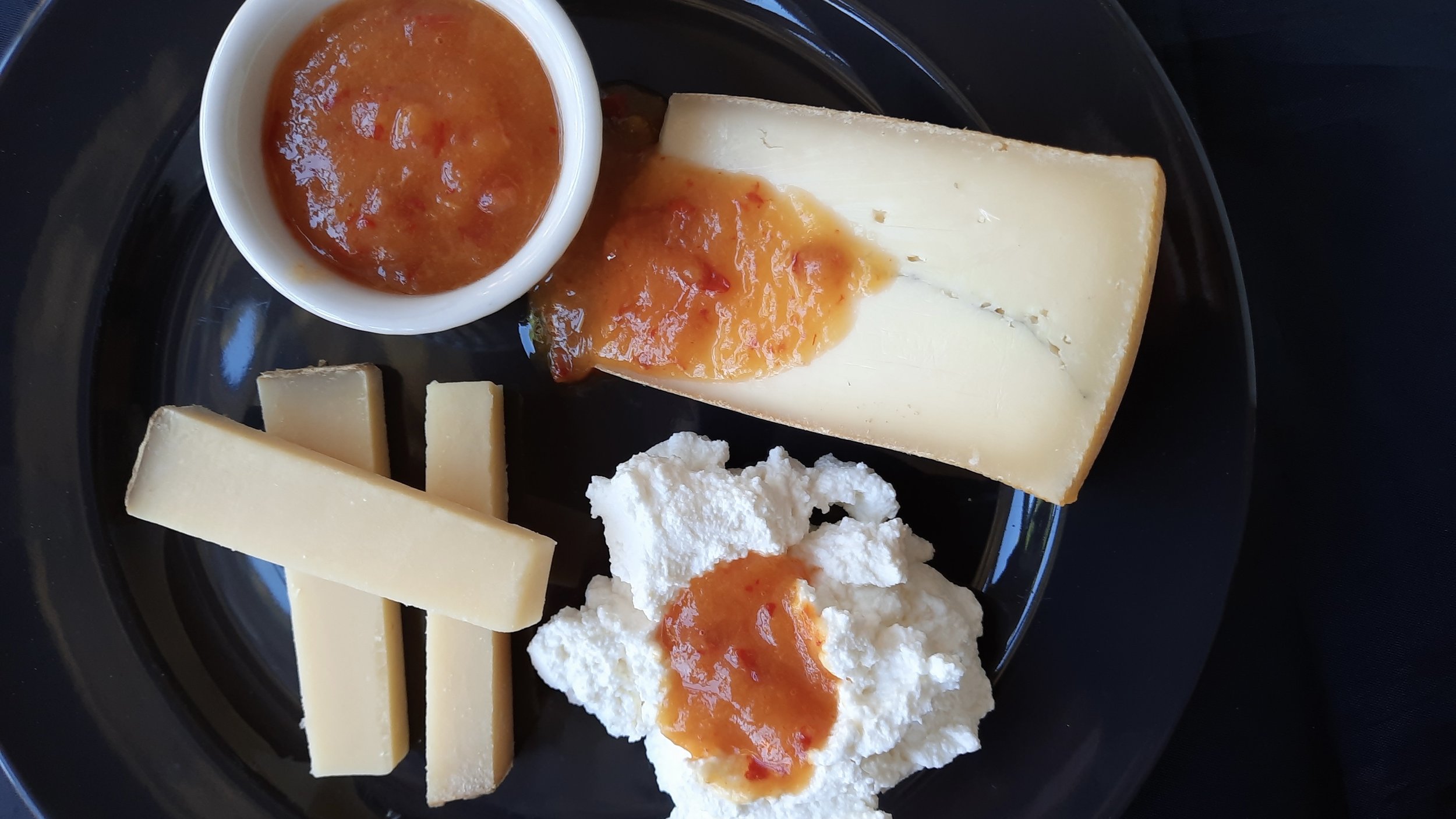AGRODOLCE ANTONATION
The recipe for Agrodolce Antonation follows this brief story which also talks about Colorado’s Palisade Peaches.
Our palates are like piano keyboards. The more flavor and textural notes that we can play, the more beautiful the overall sensation. That is why the great festive meals of the year, such as Thanksgiving dinner, are so rich an experience—all possible tastes for the tongue, including much umami, all those various textures to touch, from pillowy mashed potatoes to silken yams to fibrous fowl or protein.
The Italians, especially the Sicilian Italians, have given us a delicious short chord of tastes. It is agrodolce (“sour-sweet”), its twin notes the acidity of vinegar or citrus juice and the sweetness of sugar or honey. Sour and sweet are two of the palate’s possible basic tastes and they delightfully play against each other.
Oftentimes, an agrodolce is but the two elements together, as a thin sauce used to pickle or preserve. In Lombardy, in Italy’s north, they do that with onions and serve them as a sort of condiment.
Sicilians cook a range of agrodolces. Waverly Root enumerates several in his “The Food of Italy,” of which the one for rabbit cooked in the southern Sicilian town of Agrigento sounds mouth-watering indeed: “The sweet element is composed of a mixture of honey and sugar, and the sour of a blending of vinegar and lemon juice. It is served surrounded by eggplant, celery, olives, capers and toasted almonds.”
Mark Antonation, who served for years as a writer on food and restaurants for “Westword,” Denver’s free weekly, and now is Communication Manager for the Colorado Restaurant Association and Foundation, makes various agrodolces from overripe fruit (sometimes called “seconds” at the produce stand or farmer’s market).
“It’s a good recipe for people who like to mess around in the kitchen,” he says, adding that “it is a nice changeup from the usual preserves because it is not super sweet.
“It’s sort of a ‘refrigerator jam,’” he says, “and it freezes well.”
Antonation’s basic agrodolce recipe is extremely simple. Its base is 2 pounds of fruit and 1 cup each vinegar and sugar, all cooked together and thickened, if necessary, with some fruit pectin. (When testing the recipe here, I merely reduced the mix down at a slow and steady simmer for about an hour.)
Antonation offers variations or riffs on agrodolce, depending on the base fruit. For example, he makes a pineapple-poblano agrodolce that ends up “with a Caribbean-style flavor profile”: 1 whole pineapple, skinned and cut into small pieces, 4 poblano peppers, roasted, peeled and chopped, 1 teaspoon fresh minced ginger and several allspice berries (that he teases out with a spoon before jarring). And, of course, the obligatory 1 cup each cider vinegar and sugar. For this pineapple-based agrodolce, he uses brown sugar.
“I add a pinch of salt and 2 teaspoons of powdered fruit pectin to all [fruit-based agrodolces],” he says, “then simmer them until the liquid thickens, about 45 minutes. Then I hit them all with a stick blender lightly, so that some of the fruit chunks stay whole.”
Variations are possible even within an agrodolce recipe itself. For instance, with the recipe here, Antonation writes, “Other kinds of chiles would probably be great too, although I liked the color and heat level of the Fresnos (pretty spicy!). Roasted and peeled Pueblo green chiles would be excellent, I’m sure. If I had to guess I’d think 2 large ones would be enough.”
About Palisade Peaches: It’s not the peaches in Palisade peaches that taste so good; it’s the Palisade. These peaches are awesome because they come from this place on the planet.
Every element of Palisade’s place conspires to produce fruit unlike that from any anywhere else. Dry, clear mountain air combined with lofty, closer-to-the-sun orchards allows for intense and unrefracted sunlight. That makes for high pigment concentration in both fruit and skins (just like humans tanning poolside). A constant day-to-night temperature swing—very warm daytimes and super-cool nighttimes—slowly ripens and develops both fruit sugars and flavor molecules, as well as retains fruity acidity, giving a Palisade peach not only luscious sweetness and flavor but also tangy, snappy definition.
An agrodolce of Palisade peaches and Fresno chiles on three different cheeses, from top left, French Morbier, Wisconsin ricotta and aged Italian Asiago.
Agrodolce of Palisade Peaches and Fresno Chiles
From Mark Antonation, Communication Manager for the Colorado Restaurant Association and Foundation, who writes that this agrodolce is “sweet, tangy and spicy—great with bold cheeses and cured meats on a charcuterie board, or with pork chops. Would probably be great on a pulled pork sandwich. The agrodolce will keep in your fridge for at least a month.” Makes 4 cups.
Ingredients
2 pounds very ripe (preferably Palisade) peaches
6 Fresno chiles
1 cup sugar
1 cup apple cider vinegar
1-2 teaspoons fruit pectin powder (such as Sure-Jell brand)
Pinch of salt
Directions
Peel peaches (blanch in boiling water for 30 seconds, then cover in cold water so that the skins just slip off) and dice into small pieces. Remove stems and seeds from chiles and slice into thin rings.
Add vinegar, sugar and pectin to a small pot and bring to a simmer. Add peaches and chiles and simmer over medium-low heat for 30 minutes, stirring occasionally. Make sure the mixture doesn’t come to a rolling boil or the sugar could burn on the bottom of the pot.
Remove from heat and let cool for a few minutes before spooning the agrodolce into 16-ounce jars. Put lids on the jars and put in your refrigerator. Let it sit overnight or for a day or two before serving.
